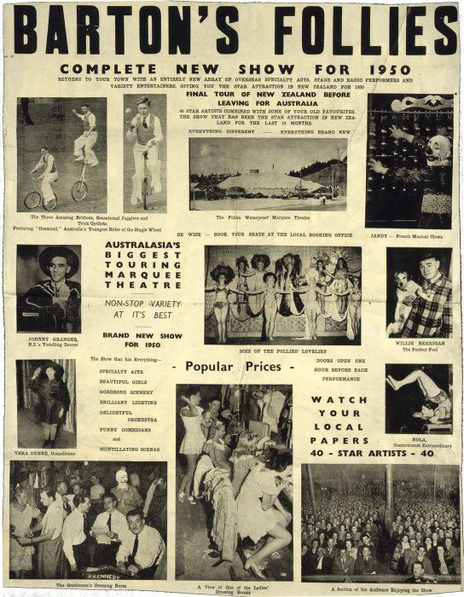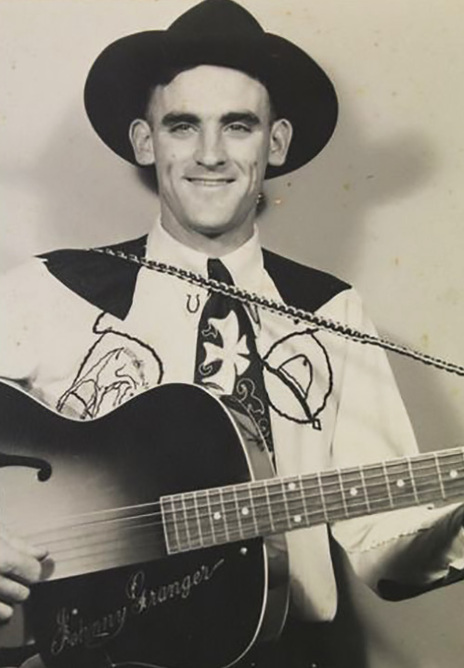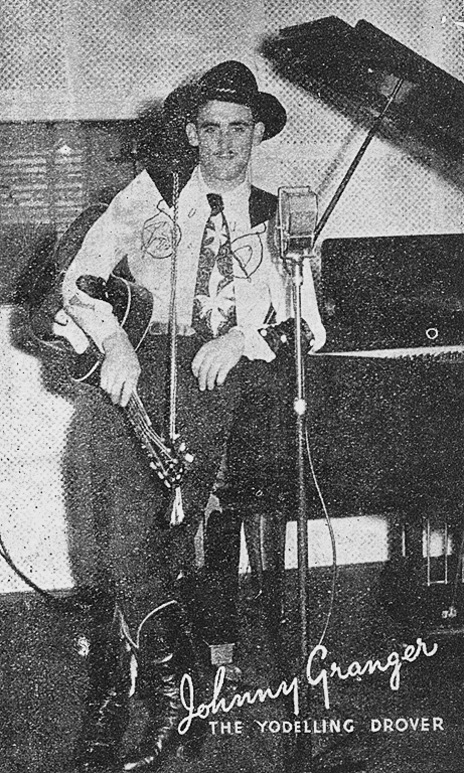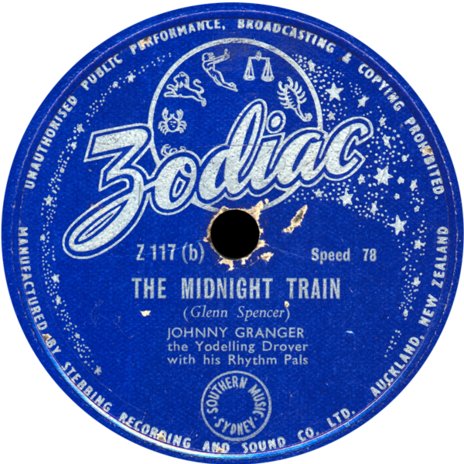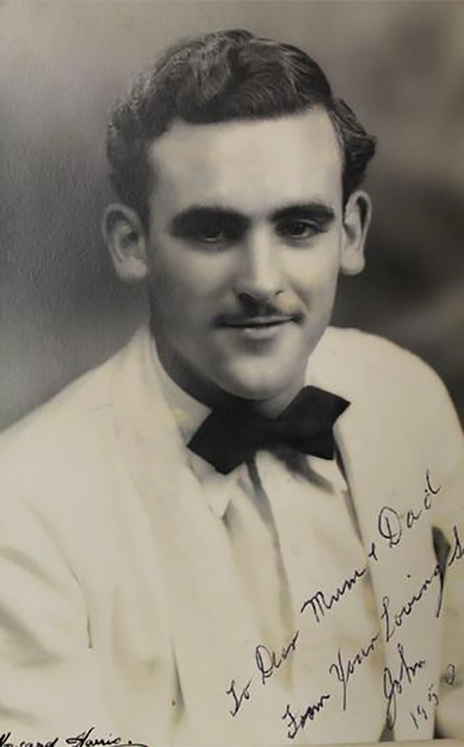In the early 1950s, Granger recorded nearly a dozen 78rpm discs, which were released by Zodiac. They are accomplished productions, sophisticated country-pop in the Eddy Arnold style rather than the primitive “hillbilly” recordings that were more typical of the era. Among his 78s is one that is almost his theme song, ‘You Don’t Know What Lonesome Is’, which he recorded shortly after it was a hit for Perry Como. The chorus goes, “You don’t know what lonesome is/ Till you git to herdin’ cows …” Granger wrote his own monologue for his version, in which he made a case for lonely dairy farmers being closer to lighthouse keepers than cowboys. Producer Julian Lee skilfully added a few sound effects of cows mooing.
Born in 1929, Granger grew up with his two older sisters singing around their mother’s piano, until the family got its first radio when he was nine. By then he was taking violin lessons. “Each of us had a party piece to do, that was essential whenever they had visitors,” he recalled to me in 2013. “A piece of poetry or a song on an instrument.” After a few years playing classical, he became interested in “what we’d now call bluegrass fiddling”. He played lead violin in a band of 20 children from the Maraetai area; the Melody Makers was set up to include as many as possible, and to raise funds for local causes.
Listening to Tex Morton and Australian yodeller Shirley Thoms on 78s stimulated Granger’s interest in yodelling. “Working on a farm of a couple of hundred acres, there was no one around, so I could make all the row I wanted. I came to develop my own techniques.”
As a young adult Granger entered many local talent quests; at one of them, he had a broken arm from playing rugby, and he was accompanied by another competitor, Rusty Greaves. “As it happened, I beat him, and he was so nice about the whole thing. I thought, what a thorough gentleman.”
Granger impressed a scout from the Australian vaudeville company Barton’s Follies, who offered him a contract to join the troupe.
At a talent quest held in Auckland at the Playhouse Theatre (later the Mercury), Granger impressed a scout from the Australian vaudeville company Barton’s Follies, who offered him a contract to join the troupe for £10 a week. His father – who was then 70 – offered to milk the farm’s 50 cows while Granger was away, and to try and make something useful out of their 200 acres of heavy clay country. He told Granger, “I’ll give you two years. If you decide to stay in show business, we’ll sell the farm and away you go.”
So from 1950 Granger spent about a year touring Australia and New Zealand with Barton’s Follies, who advertised the show’s “specialty acts, beautiful girls, funny comedians [and] scintillating scenes”. Among them was Nola, “contortionist extraordinary”; the Brittons, a trio of trick cyclists; Willie Berrigan, “the perfect fool”; and the Follies’ “lovelies”.
Granger opened the show, warming the crowd up while the acts prepared for their items. Among the other performers were magicians, a bell ringer, female singing dancers, clowns and puppeteers. During the day, the others were idle, but Granger’s farming background meant he enjoyed mucking in, helping set the tent up, predicting the weather. To save money, he slept in a small tent and cooked his own meals.
After this experience in Australia, he returned to Auckland and began recording for Zodiac at Stebbing’s Wellesley Street studio. He covered standards such as ‘Tear Down the Mailbox’ and ‘Cold, Cold Heart’, the latter just weeks after Tony Bennett covered Hank Williams’s original. ‘Mailbox’ is given a western swing feel, and in the bridge he encourages his band to “get real gone”. C’mon Yehudi – let her scrape, boy! Okay Bobby with the big bass fiddle … and a little bit of geetar … With jazz musicians such as guitarist Ray Gunter and bass-player Bobby Ewing in his band, he was in exalted company. The fiddle player may be Granger himself. He also recorded two duets with Pat McMinn, ‘Let’s Give a Little’ and ‘Let Mother Nature Have Her Way’.
In his magazine Country and Western Spotlight Gibson wrote that Granger’s recordings gave a momentum to the fledgling Zodiac label, but after a two-year run of recording he took a break to concentrate on farming. Though he made a trip to Korea to entertain the New Zealand troops, and he continued to perform casually, his last recording came after a four year gap. In 1957 he released ‘I’m Stickin’ With You’ backed by the Rock’a’billys in honky-tonk style.
In 2012, Stebbing’s reissued all of Granger’s recordings as digital downloads, and this was followed in 2013 by a Radio New Zealand Spectrum documentary. “I never rated myself,” he told the producer, David Steemson. “When I see what the kids are producing today, like the Topp Twins, now they are performers. I love their work.”
Did he ever regret his early retirement from show business? “No – I had to try training the Whitford clay. I couldn’t do both. Too hard. I made my choice.” These days, Granger – who is retired south of Auckland – says he is better known as a whistler.
